Interview: Illustrator Sara Holbert on Influences, Music & Intentional Communities
Sara Holbert is a 22-year-old illustrator, painter and self-described “imaginer.” Her artwork tells dreamy tales of doe-eyed waifs and childhood fantasies that draw the viewer in. She’s a Michigan native and a recent Indiana Wesleyan University graduate who just relocated to Allston, Massachusetts to pursue art, music, and start a community called Charisma House. Her charismatic ideas and beautfiful work are already guiding her to interesting places. We’ll be keeping in touch with Sara.
stated: How would you describe your work and creative process?
SARA HOLBERT:I would say that my creative process is split between two mindsets. My illustrative work truly does reflect my yearning to live through the characters and situation of the narrative I may be portraying. With my more personal work, this yearning is transformed in the sense that the characters I’m painting almost symbolize a certain mood, thought or feeling and may not necessarily be a “living, breathing person.” I guess you could say that my personal work symbolizes more who I see myself as rather than what I’d like to experience. But, with an illustration background, narrative has a place within me that allows me to be free with my imagination when thinking of the physical world. I’m finding that when it comes to portraying a certain feeling, thought, or philosophy, I tend to switch the character’s purpose within the piece. There’s definitely an overlap of these mindsets and I’m currently exploring these overlaps.
As far as preparation for a piece, I do a ton of drawing and sketching, almost obsessively. I tend to draw a ton of silly little characters for enjoyment which usually develops into a concept for a finished painting. I’ve recently been exploring oils and acrylics, combining the processes with digital.
stated: How did you get started with all of this?
SARA HOLBERT: What really drew me into my work were silly little stories that my sisters and I would create as young girls. We would spend countless hours creating these elaborate stories; drawing characters, whether their home was an old napkin or a book cover, to accompany them. I don’t think I ever really lost that part of me, which pretty much determined my area of study. Entering college, studying illustration was something I truly enjoyed, but looking back as a recent graduate, I almost wonder what it would have been like if I studied something more emotive and concept-heavy like painting. The sense of narrative that I’ve learned through academia has only intensified my longing for concept-heavy work. I know there’s a lot of disagreement with this idea, but I tend to believe that painting and illustration don’t have to be two separate genres. There’s a sense of purpose with both, and I see those purposes being different only by the process they go through—whether it be to tell a story or to tell someone how you feel through imagery, color, figures, textures, and anything else imaginable.
stated: As a recent graduate, it might be difficult to answer this entirely objectively, but I know some artists swear by their art training, while others feel it isn’t necessary. Do you feel you got what you needed/wanted from your training? Was it a supportive community for you or did you find it difficult to work within a more structured environment?
SARA HOLBERT: This is a very interesting question! Or, shall I say, I have many thoughts about the question! My husband and I, both in the same graduating class, have had many, many discussions about this very topic. My husband had no background whatsoever in art until his sophomore year of college, and made enormous gains about his aesthetic and philosophy. The funny thing is that it wasn’t so much the school that drove him, but his advisor who gave him the chance—Rod Crossman. I gained a lot of knowledge about how to handle work professionally, yet with passion, as well as the core concepts of illustration from my advisor, Ron Mazellan, which I truly appreciate. I think that was what we both needed, but once those relationships were established, I felt I needed more training within the arts and not, say, speech class (I am a horrible public speaker!). We both agree that we received a great deal of moral support and love from our faculty, who encouraged us much like a family. I definitely don’t regret that aspect one bit.
On the other hand, studying at a liberal arts school, where there were quite a bit of general education courses required for the degree, often frustrated me, to be honest! I spent my class time drawing, and then dealt with the consequences of deadlines later. All of my core classes were very intense in their themes, and other areas of study, for example figure drawing, were severely neglected. I always had a hard time finding a balance between doing what I came to do—art, and what I “had” to do—general education. Looking back, it wasn’t a matter of time management, but a matter of the heart. I tend to have a hard time creating something if there’s no passion or push to do so. I don’t mean that in a lazy way. Let me rephrase: I can finish an illustration to its completion without passion, but essentially there’s nothing to it except rules—narrative, worm’s eye, and then throw in overlapping shapes for depth. The process becomes mechanical. I think there’s a balance of passion and the mechanical; and maybe a little more passion and the unknown yet.
[ Subscribe to the Stated Magazine Newsletter and follow us on Facebook and Twitter! ]
I think there’s a fine line, and it’s certainly different for everyone. I actually would love to continue practicing by taking some more figure-drawing classes as well as an oil-technique class. In hindsight, If I were to go back, I would have probably studied at a school solely dedicated to the arts or not at all, and continue my training through selected classes. Then again, maybe I wouldn’t be who I am now, and have all of the relationships I’ve established? I’ll never really know! I’m glad to be graduated and moving on, and don’t regret my education, but I do think there are alternatives that are much more effective when it comes to studying art.
stated: It’s certainly different for everyone. Your work has a dreamy, childlike appeal that seems to tell a story with each image. Do you often have a story or scenario in mind for each work? Have you done any writing to accompany your artwork?
SARA HOLBERT: If it’s a personal illustration, I actually don’t write too much of a story physically unless I know it’s going to be a story I’d like to portray in a series of illustrations. I’ll do a ton of character development through sketches, drawings, and thumbnails. I like to balance my personal expectation with a certain level of the unknown, creating the story as I’m drawing the characters. I tend to feel a little cramped when I try to draw someone or something with a very specific expectation first. I have a loose concept in mind and keep developing it until I feel that the character is justified. For my personal paintings, this mindset of narrative isn’t as influential, but still prevalent. I’m personally still exploring this part of me. I eventually want to pursue my personal work and philosophies but am still finding a balance.
As far as scenarios, this is probably the foundation of my illustrations. I think of a situation or a moment in time that almost makes me, as well as the viewer, ask why the characters are in the positions they’re in. I long to illustrate situations that can be empowering to a wide range of people. In a way, I want to create stories that aren’t catered to the idea that childhood is this simple existence. It’s definitely a carefree and vulnerable one, but I believe the two ideas are much different. I feel that a lot of children’s books boil down stories to a lot of stereotypes and cliches that simplify childhood instead of encouraging imagination and thought. I definitely don’t think that every children’s book author or illustrator falls into this statement. It’s simply the idea that it’s easier to simplify stories than to give themes serious thought for an age group that “won’t notice the difference.” I mean this with the utmost respect for illustrators coming before me!
The only story I’ve written out in full that’s currently still a work in-progress is for a personal storybook by the title “Luci’s Magic Bell,” which I hope to illustrate into a full book.
stated: Keep us posted—we’d love to see it. Who do you count as some of your influences?
SARA HOLBERT: Some of my biggest influences and favorite artists include: Klimt, James Jean, Charmaine Olivia, Mark Ryden, Loish, Amy Sol, Audrey Kawasaki, Mucha, Jon Foster, and street artists like Gaia, FAILE, Banksy, Miss Van, and Shepard Fairey.
stated: Fantastic list. The connection to your work is apparent with James Jean and Charmaine Olivia, while others are less obvious, such as Banksy and Shepard Fairey. There’s a common theme to their work and yours, beyond just the stylistic sensibility. It seems they tell stories and challenge the viewer—much as you do with your work—would you agree?
SARA HOLBERT: Oh gosh, thank you. I would agree with you in the fact that I think all of the artists listed do challenge the viewer in one aspect or another, and the variety is what inspires me. I can take a look at a Klimt and be blown away with his story, and then take a look at a Banksy or Shepard Fairey and really, truly experience the time-gap between the art, its philosophy, its non-philosophy, its questions. It’s the amazement of how people have changed; but in other ways, people haven’t really changed. Even looking at other artists today you feel this sense of wonder and how they may have come to that conclusion. Variety is what inspires me.
stated: Any recent or forthcoming shows/events/goings-on would you’d like to mention?
SARA HOLBERT: I’m a recent graduate! I graduated from Indiana Wesleyan University with a Bachelor of Science in Illustration. Will Holbert, a painter and my husband, and I will be moving to the Allston, Massachusetts area to an intentional community to pursue our art and musical interests in January. I’m also hoping to become a really top-notch barista as I play the role of poor-starving artist. :-)
stated: Congratulations! Allston’s the home of Harvard and a great music scene. How did you guys pick Allston? Can you tell you us a bit about the intentional community?
SARA HOLBERT: Honestly, Our friends and my band-mates had heard the area was nice. All of my band-mates attend colleges within the area, which makes their commute a lot less stressful. We were looking for a place to promote our artistic endeavors, and I think that’s what really sold the area. We actually specifically live in the Brighton area, but it’s pretty much Allston’s backyard.
The intentional community is actually the brainchild of my darling husband, William Holbert, and Aaron James Nicolas, one of my band mates from “The La De Les.” I knew Aaron from my hometown in Michigan and met Will through him, actually. The two of them met in college as entering freshman and were best friends ever since. They frequently joked about starting a cult (haha) until they actually started seriously wanting to create an intentional community—a place that would cater to creative and spiritual growth. It’s somewhat of an experiment in intentional communal living and living with a group of people that can grow from one another.
Will and I started dating and I became sold on the idea. This idea of an intentional community, which is now called “Charisma House,” stuck with Will and Aaron even after Aaron moved to Boston after dropping out of college and transferring to Berklee College of Music. The intentional community was always in the back of our minds and it transformed not only into a spiritual endeavor, but a creative and musical one when my band, “The La De Les,” which consists of Aaron, Cody Nicolas, his brother, and Jocelyn Nicolas, Aaron’s wife, moved to Boston. It kind of solidified the plans in a way that we had hoped for. Eventually, we’d like for the community to grow into something more and emphasize a sustainable and ethical way of living. But, for now, we’re working with what we have: each other.
stated: So, “intentional” in the sense that there is a deliberate effort to create a community that supports art, music, creativity and living in a sustainable and ethical way. Is Charisma House literal? Are you renting a big house, calling it the Charisma House, and organically developing your community?
We are currently renting a large house, living under the same roof. It’s been quite the transition, for Will and I have just moved to the area, somewhat “completing” the core members of “Charisma House.” So, yes—Charisma House is a pretty literal community in all senses. We live together, eat together, play music together. Will and I, once we’re settled, plan on doing art projects together as well as promote our personal work. I think the desired future for the community entails an actual apartment complex, which we’re slowly working towards. It’s very surreal in the sense that the “Charisma House” has just been an idea that we’ve all held onto for such a long time. We’re actually just seeing the beginning stages. It’s very cool, yet very surreal to see the idea blossom.
stated: It will be interesting to see where it leads you. You mentioned your band, The La De Les, and you’re listed in the songwriting credits. Do you still write? Are you a singer?
SARA HOLBERT: I am actually the drummer! All those years of marching band payed off, eh? We all write, usually collaborating on the lyrics. We like to think of The La De Les as an instrumental band with lyrics. Our songs are always musically developed first. It’s a combination of an intuitive yet formal method of writing, and we develop the foundation of the song as we go. I write, but I probably do most of my writing for my personal project, with me and my guitar. I’m a huge Bob Dylan fan, and ever since I’ve heard him at 16, I’ve adopted the guitar and harmonica as kind of an expression or auditory journal. The music was really never meant for anyone except for my personal indulgence, but I have played solo here and there. I still write, and it’s still very much of my life.
stated: Thanks for joining us and all the best with your projects.
SARA ASKED LEIGH…
Sara asked photographer and fellow stated artist Leigh Righton…
SARA: I see that you have a great combination of classic portraiture and surrealistic photography that incorporates some editing. What is your favorite vein of photography, and why?
—-
Visit Sara at:
www.littlesoulart.com
www.etsy.com/shop/flyk
[ Subscribe to the Stated Magazine Newsletter and follow us on Facebook and Twitter! ]










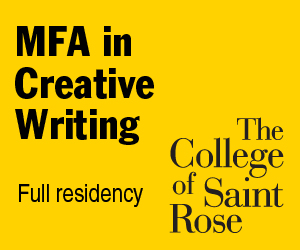
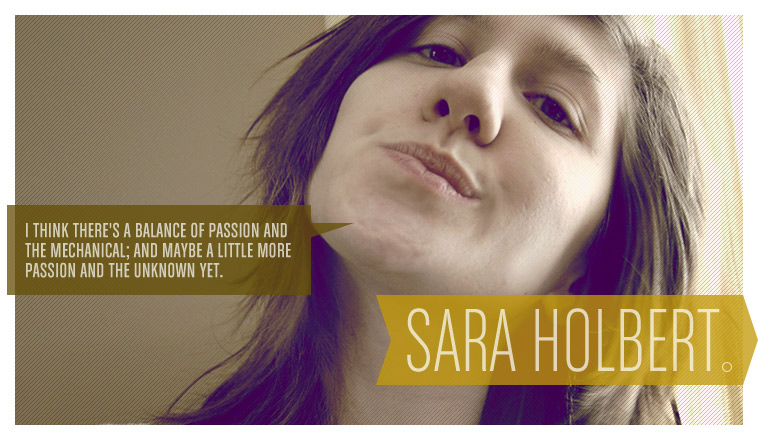
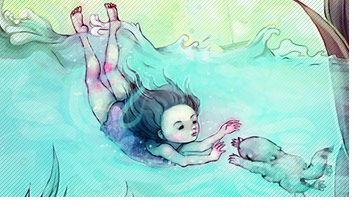
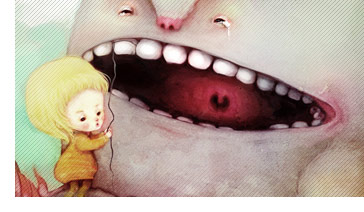
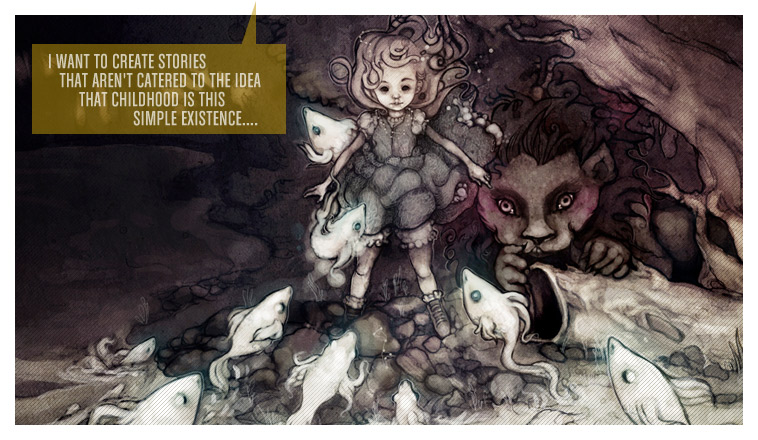
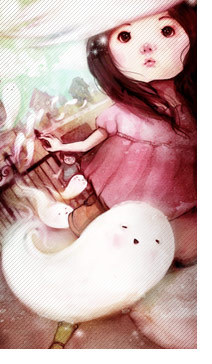
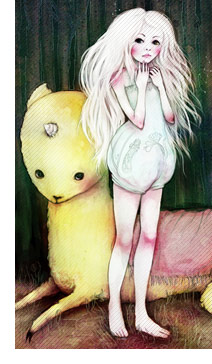
 Ryan Swearingen
Ryan Swearingen
Reader Comments (1)
This was a wonderfully informing read into more thoughts behind your work. I especially found interest in the part about "sense of narrative" in painting and it's concept-heavy nature, since as you know it's something I would like to attempt more with photography. If sketching to work up to reaching an idea helps, I certainly think everyone could benefit from your practice (even if not rendered as well!) and am encouraged to put more effort in the practice. Of course, the question on your education was also interesting and I wonder what our artists would say who have graduated recently. Thank you Sara Holbert~!